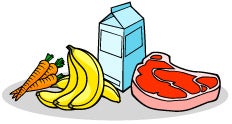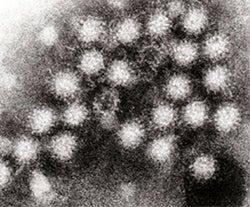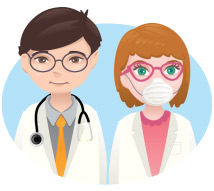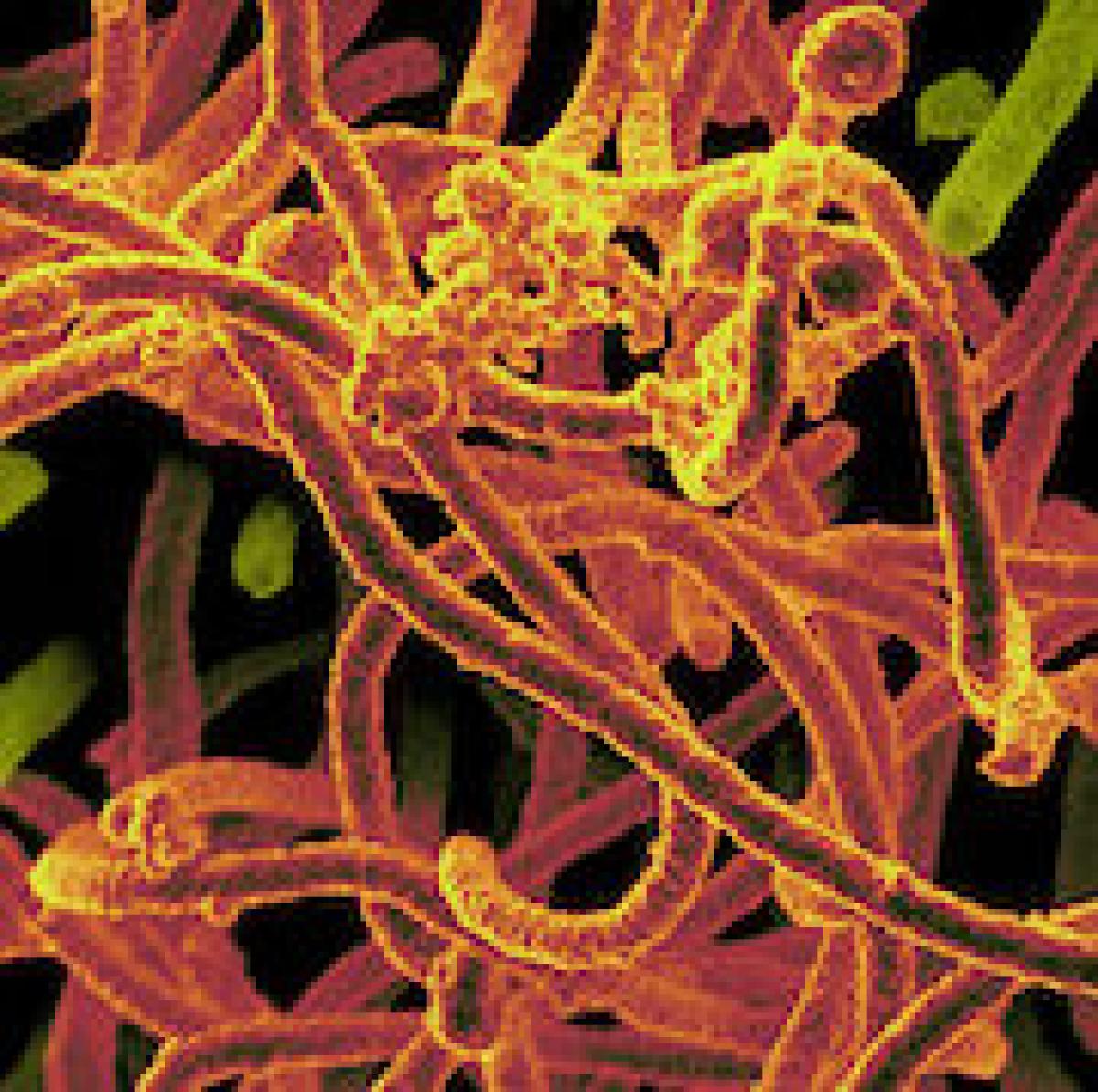What’s Lurking in Our Food?

By Kristi Mollner
Food helps us to grow and to keep our bodies fueled. We have many foods available to help us stay healthy. These include fruits, vegetables, grains, meats, and dairy. While humans may have an exceptionally wide variety of meal options, we aren’t the only organisms that need to eat to survive; all living things need food or a source of energy. As it turns out, some smaller organisms even live and grow in the food we eat. Some of these organisms can be pathogens.
A pathogen is a virus, bacterium, fungus, or parasite that infects and harms a living host. Humans can become sick if they eat a food that contains a pathogen. This sickness is called a foodborne illness. Over 250 different pathogens can cause a foodborne illness. Let’s talk about some of the more common ones.

Norovirus is the most commonly occurring foodborne illness in the United States. It is often found in food that has come into contact with a person who is already infected with the virus. Norovirus can also be found in ready-to-eat foods and raw or undercooked oysters. Or it can hide in other raw foods or cooked food that hasn’t been properly handled. Improper handling of food can include touching food with unwashed hands, using utensils that are not clean, and not fully cooking food.
Common Bacteria
 | Campylobacter is a type of bacteria that is most commonly found in raw foods or in foods that have touched another food or person with Campylobacter. The foods most commonly associated with these bacteria are untreated milk, poultry, and fruits and vegetables. |
 | Listeria monocytogenes is another type of bacteria. The foods most commonly contaminated with Listeria are uncooked meats and vegetables, untreated milk, certain cheeses, processed meats, and smoked seafood. |
 | The bacteria Salmonella is typically found in foods that come from animals. These include meat, milk, cheese, and eggs. However, any food can become contaminated with Salmonella if it touches other contaminated food. |
 | Staphylococcus aureus is our final common type of bacteria that can cause foodborne illness. It can be transferred to any food that has been improperly handled by someone who is carrying the bacteria. It can also be found in untreated milk and cheese products. |
Public Health Officials

Professional workers called public health officials are in charge of tracking what types of foods give people foodborne illnesses. They receive reports when a person gets sick with a foodborne illness. This information may come directly from the person who is sick, his or her doctor, or a laboratory. Laboratories that work with foodborne illnesses are called foodborne disease surveillance laboratories.
Public health officials investigate what the sick person recently ate and where he or she ate it, such as in a restaurant. They also check if any more people reported being sick that ate the same food or at the same restaurant. A foodborne outbreak occurs when two or more people eat the same food and become sick with the same illness. If a foodborne outbreak occurs, it could mean a restaurant has food that is not properly prepared. Preparing food properly is the best way to avoid foodborne illnesses.
Additional images from Wikimedia via GrahamColm (Norovirus), De Wood (Campylobacter), Dr. Balasubr Swaminathan (Listeria), National Institutes of Health (Salmonella), Janice Haney Carr (Staphylococcus) and The U.S. Food and Drug Administration (microbiologist in laboratory).
Read more about: What's Lurking in Lunch?
Bibliographic details:
- Article: What’s Lurking in Our Food?
- Author(s): Dr. Biology
- Publisher: Arizona State University School of Life Sciences Ask A Biologist
- Site name: ASU - Ask A Biologist
- Date published:
- Date accessed:
- Link: https://askabiologist.asu.edu/bacteria-in-food
APA Style
Dr. Biology. (). What’s Lurking in Our Food?. ASU - Ask A Biologist. Retrieved from https://askabiologist.asu.edu/bacteria-in-food
Chicago Manual of Style
Dr. Biology. "What’s Lurking in Our Food?". ASU - Ask A Biologist. . https://askabiologist.asu.edu/bacteria-in-food
Dr. Biology. "What’s Lurking in Our Food?". ASU - Ask A Biologist. . ASU - Ask A Biologist, Web. https://askabiologist.asu.edu/bacteria-in-food
MLA 2017 Style
Be Part of
Ask A Biologist
By volunteering, or simply sending us feedback on the site. Scientists, teachers, writers, illustrators, and translators are all important to the program. If you are interested in helping with the website we have a Volunteers page to get the process started.


